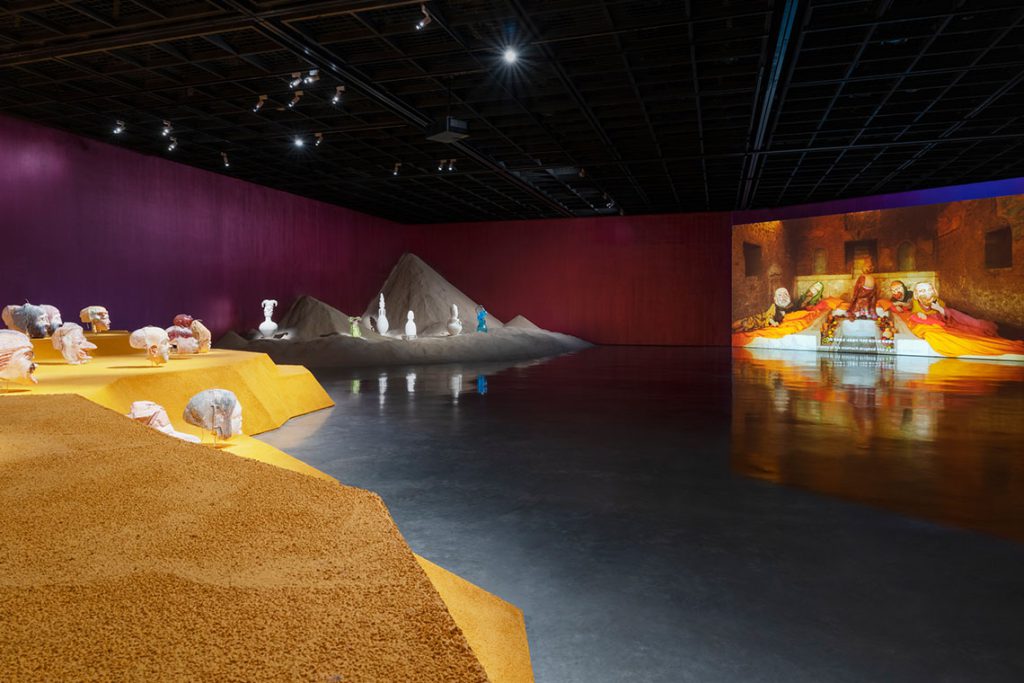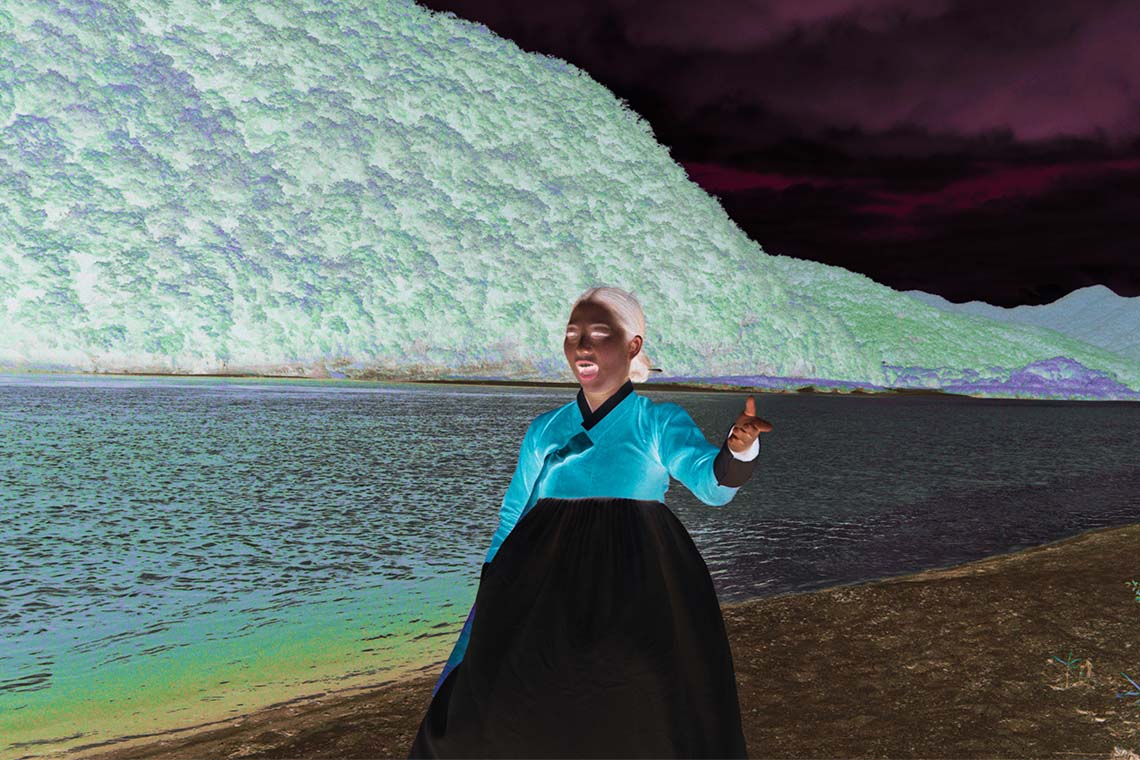In his latest work, Love Story (2024), Wael Shawky embarks on a compelling cross-cultural exploration in his eponymous solo show at Daegu Art Museum.
Celebrated for his unerring ability to unpack the complexities of memory and belonging, the Egyptian artist Wael Shawky shifts his gaze from the familiar landscapes of the Middle East and Europe to the rich parables of South Korea in a solo exhibition commissioned by Daegu Art Museum, his first institutional show in the country. Organised under the museum’s annual International Exchange Exhibitions programme, in the spacious, rectangular gallery on the ground floor are two of Shawky’s major video works, Al Araba Al Madfuna I (2012) and I Am Hymns of the New Temples (2023), alongside the newly commissioned Love Story. The grand scale of the space mirrors Shawky’s sprawling narratives, which traverse continents, cultures and centuries.
Opening the exhibition with Love Story feels particularly apt, as it allows local audiences to ease into Shawky’s distinctive aesthetics by encountering a piece that incorporates familiar elements. Born from several research trips to Korea over the course of two years, the work is a four-channel video installation that invites a renewed look at three Korean parables that celebrate values such as honesty and integrity: The Golden Axe and Silver Axe, The Silkworm Princess, and The Rabbit’s Trial. The Golden Axe and Silver Axe highlights the importance of truth, as a poor woodcutter’s honesty is rewarded while deceit is punished. The Silkworm Princess similarly emphasises integrity, as it tells of a king who loses his daughter due to his broken promise, as she transforms into silkworms to fulfill her vow of loyalty. Yet the princess’s devotion is honoured as her sacrifice ultimately brings prosperity to the kingdom. Meanwhile, The Rabbit’s Trial explores fairness, as a duplicitous tiger is brought to justice as it is outwitted by a clever rabbit. Shawky’s decision to incorporate two relatively obscure parables (The Silkworm Princess and The Rabbit’s Trial) over more widely known ones, such as The Tale of Sim Chong or Heungbu and Nolbu, underscores the depth and specificity of his research, which contribute fresh perspectives to the cultural archive.

However, Shawky’s presentation – or “translation” – of the stories transforms their moralising tone into something far more nuanced and less didactic. In the darkened room, each story unfolds on a large screen in which a lone woman gracefully traverses various landscapes while recounting the parables in booming, melismatic tunes of Pansori – a Korean genre of musical storytelling. Her white hair and pupils, paired with the surreal blue-and-white or red-and-orange hues of the trees, imbue the work with a quality that is both poppy and phantasmal. The lustrous cyan walls, glowing faintly under the neon light emanating from the screens, make stepping into the exhibition space akin to entering an enchanted forest at night.
The result is an acute awareness of self as one participates in the architecture of myths. Instead of simply absorbing the moral lessons, one reflects critically on both the self and society: how have these parables shaped, and how do they continue to shape, contemporary Korean life? Over time, visitors may shift their attention away from the plots of parables to other elements, such as the relationships among humans, animals and spirits. A particularly compelling strand emerges in the fluid, non-hierarchical connections between these entities, which speak to a collective imaginary that stands in stark contrast to contemporary Korea, where man-made urban environments dominate and subsume the natural world.

Shawky’s use of estranging techniques to reframe familiar narratives is common across his other works in the exhibition, Al Araba Al Madfuna I and I Am Hymns of the New Temples. By placing the oldest work right after Love Story, the show avoids reinforcing the chronological order embedded in the linear architectonics of the space, which echoes Shawky’s practice of blurring the boundaries between the past, present and future. Al Araba Al Madfuna I revisits Egyptian writer Mohamed Mustagab’s parable, in which a tribe called Al Jabarina gathers new animals into its community in pursuit of material comfort and to win the favour of heaven. On the other hand, I Am Hymns of the New Temples centres on Pompeii as a space where Egyptian and Greek mythologies intertwine. Placed in dialogue with Love Story, the works highlight Shawky’s ability to use storytelling as a means of cultural excavation and reimagination.
This solo show offers a glimpse into the ways in which myths traverse cultural and historical boundaries. Love Story, Al Araba Al Madfuna I and I Am Hymns of the New Temples all invite viewers to reflect on the shared human impulse to create stories that shape and preserve collective memory and identity, reaffirming Shawky’s role as a masterful storyteller and situating Daegu Art Museum as a vital space for cross- cultural dialogue and artistic exchange.
Wael Shawky: 2024 International Exchange Exhibition runs until 23 February



